According to many experts, chronic prostatitis is an inflammatory disease, the cause is an infection with possible participation of autoimmune disorders, which are characterized by damage to the parenchymal and interstitial organs.The disease has been known to drugs since 1850, but today it has not been studied and cannot be treated well.Bacterial prostatitis (6 - 10%) and non -prostatitis (80 - 90%) are the most common and social inflammation of men who significantly reduce their quality of life.The disease is recorded primarily in young and middle -aged people and is often complicated by the functions of generative disorders and functions (potential reduction, infertility, etc. -more).The disease is recorded in men in 8 - 35% of cases aged 20 to 40.
Causes of bacterial prostatitis are pyogenic flora that penetrates iron from the urethra, or lymphogenic and hematogenous pathways.The etiology of non -chronic prostatitis and its pathogenesis remains unknown.They are mostly experienced by men over 50.
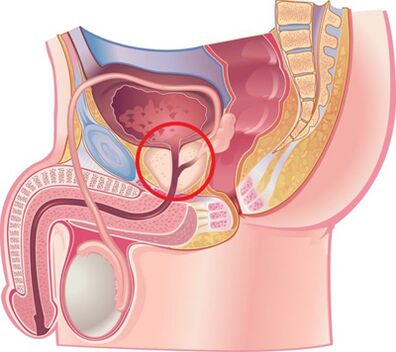
The cause of the development of a disease
Chronic prostatitis is now considered a polyethiological disease.There is an opinion that the disease is caused by the penetration of the infection into the prostate, and then the pathological process continues without its participation.This is facilitated by several uncontrolled factors.
Infectious factors for the development of chronic prostatitis
In 90% of cases, pathogens penetrate iron from the urethra, resulting in acute or chronic prostatitis.Cases of transportless transportation are observed.The course of the disease is influenced by the state of the human body and the biological nature of the pathogen.It is considered that the transition of acute prostatitis to chronic occurs due to loss of tissue elasticity due to excess products from fibrous tissue.
Among the agents of chronic prostatitis, the following pathogens were found:
- In 90% of cases, the disease reveals gram -negative bacteria such as escherichia coli (E. coli), enterococcus faecalis (enterococcus fecal), a bit less frequent - pseudomonas aeruginosa, klebsiella spp., SPP proteus.Pseudomonas aeruginosa, enterobacter aerogenes and spp acinetobacter.Camera bacteria -Positive enterosococci, streptococci and staphylococci are rare.
- The roles of staphylococci, uraplasma, chlamydia, trichomonia, gardnerell, anaerobic bacteria and the Candida genus are finally unexplained.
Infection into the prostate penetrates several ways:
- The upward path is most likely to be proven by the frequent combination of prostatitis and uretritis.
- Hematogenic prostatitis develops with the penetration of infections into the gland with blood flow, observed with chronic tonsillitis, sinusitis, periodontitis, pneumonia, cholecystitis and cholangitis, skin purulent disease, and other.
- In contact, chronic prostatitis develops with urethritis and uretral tightness, when infection penetrates the gland with the flow of urine, with purulent kidney infection, kanalicularly with epipidymitis, deferentitis and funiculitis,
- Lymphogenously, infection penetrates the prostate during proctitis, thrombophlebitis hemorrhoidal veins, etc.

Factors that are not contagious in the development of chronic prostatitis
Chemical
According to experts, the main role in the development of chronic prostatitis belongs to intraprostatic urine reflux, as urine flows from the urethra into the gland, which causes disruption of the prostate and seminal vesicles.
During this disease, the vascular reaction develops, leading to swelling of the organs, the nervous and humoral regulations of the urethra smooth muscle tissue, and the activation of the alpha1Receptors -Receptors are causing the development of dynamic barriers and contributes to the development of new intraprostatic reflux.
During reflux, the veins contained in the urine lead to the development of "chemical inflammatory reactions."
Hemodynamic disorders
Supports chronic inflammation and disorders of blood circulation in the pelvic organs and scrotum.Contraition develops in people leading an inactive lifestyle, for example, drivers, office workers, etc., with obesity, sexual abstinence, sexual life dismetria, frequent hypothermia, mental and physical advantages.Eat hot and spicy foods, alcohol and smoking, and more.Helps maintain the inflammation process.
Other factors
There are many other factors that support chronic inflammation in the prostate.These include:
- Hormones.
- Biochemistry.
- Disruption of immune response.
- Autoimmune mechanism.
- Infectious and allergic processes.
- Characteristics of the structure of the prostate gland, leading to difficulty in the right drainage.
Often, the cause of the development of chronic prostatitis cannot be determined.
Classification of prostatitis
According to the classification proposed in 1995 by the US National Institute of Health, prostatitis is divided into:
- Acute (Category I).Total 5 - 10%.
- Chronic bacteria (Category II).Total 6 - 10%.
- Chronic non -bacterial inflammation (Category IIIA).It is 80 - 90%.
- Non-chronic inflammation (category IIIB) or chronic pelvic pain syndrome.
- Chronic prostatitis is detected by chance (category IV).
The signs and symptoms of chronic prostatitis
Chronic prostatitis course is long, but not boring.The oppression period is followed by relative calm period, which occurs after complex anti-inflammatory and antibacterial therapy.
The development of chronic bacterial prostatitis is often preceded by urethritis of bacterial or gonorrheal properties, non -bacterial circulation in the pelvic and scrotal organs (hemorrhoids, varicocellus, and others), sexual advantages.
Patients with chronic prostatitis give a lot of complaints.They have been to the doctor for years, but are rarely examined for prostate disease.About a quarter of a patient has no complaint, or the disease occurs with small clinical symptoms.
Complaints from chronic prostatitis patients can be divided into groups.
Urinary disturbance associated with urethra narrowing:
- Difficulty at first urinating.
- Poor urine flow.
- Instant -Tighten or urinate.
- Feel free to clear the bladder.
Symptoms caused by irritation of the nerve endings:
- Frequent urination.
- The urge to urinate is sharp and strong.
- Urine in small portions.
- Urinary incontinence during the urge to urinate.
Pain Syndrome:
- The intensity and nature of the pain are different.
- Localization of pain: lower abdomen, perineum, rectum, thigh and lower back, internal thighs.
Sexual Dysfunction:
- Pain in the rectum and urethra during ejaculation.
- Erection slowly.
- Lose orgasm.
- Premature ejaculation, etc.
From the nervous system: neurotic disorders in the form of attention to the patient's attention to their health.
Signs and symptoms of non -chronic prostatitis
Chronic pelvic pain syndrome (CPP) occurs with common symptoms for chronic prostatitis, but there is no bacteria in the 3rd part of the urine and in the secretion of prostate during examination.Chronic bacterial interstitial cystitis, rectal disease, spastic myalgia syndrome from the pelvic floor and functional prostate lesions, which are caused by disorders in the monitoring of organs and its hemodynamics, can simulate CPP.
If neurovegetative functions are affected, atoni and gland conservation disorders are observed, indicated by difficulty in the rapid and complete closure of the urethra lumen.In this case, after urination, the urine continued to be released with a long fall.In such patients, this study reveals instability and increased excitement, indicated by increased sweating and heart activity, changes in dermography.
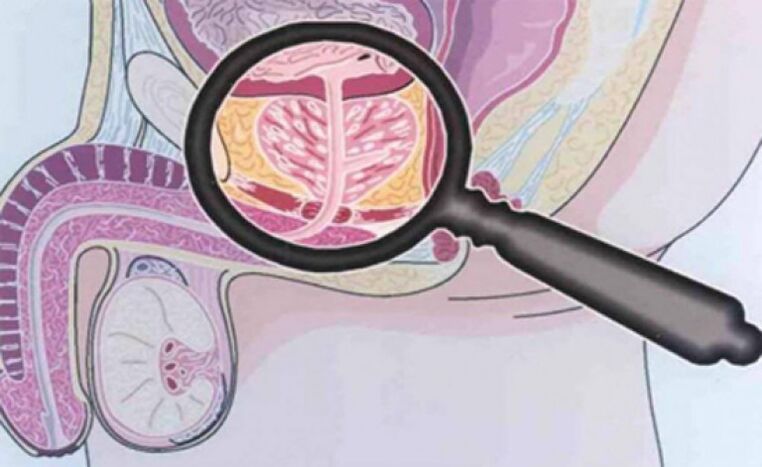
Complication
Chronic prostatitis long courses are complicated by impairment of sexual and reproductive function, the development of diseases such as vesiculitis and epipidymitis, as well as organs.Organ sclerosis exacerbates local micro and urodynamic circulation, as well as surgical intervention results.Periurethral tissue fibrosis leads to the development of urinary tract disorders.
Diagnostics
Because there are many reasons for the development of chronic prostatitis, various diagnostic tests are used to diagnose it.The success of treatment depends on the identification of the right cause of the disease.The diagnosis of chronic prostatitis is based on the following data:
- Classic triad symptoms.
- Physical method complex (prostate digital rectal examination).
- A set of laboratory methods (urinalysis and microscopy of prostate secretion, culture and determination of microflora sensitivity to antibacterial medicine, general analysis of urine and blood).
- To detect gonococci, smear bacterioscopy of the urethra, PCR and serological methods (to detect ureaplasma and chlamydia).
- Urofluometry.
- Prostate biopsy.
- A set of instrumental methods (ultrasound examination).
- Determination of the patient's immune status.
- Determination of neurological status.
- With ineffective treatment and suspicion of the development of complications, resonance and magnetic imaging, blood circulation, etc.
Palpation of the prostate gland
Prostate palpation, which increases during the severity and decrease in the subsidiary of the inflammatory process, is very important in the diagnosis of the disease.In chronic prostatitis, during the severity of the swelling and painful iron.
The density of the organ's consistency can vary: the softness and compaction area feels, the western zone is determined.In palpation, it is possible to evaluate the shape of the gland, the condition of the tubercles of the seed and the surrounding tissue.
The process of transmitting a transcregation finger is combined with gland seizure.Sometimes there is a need to get secrets from each stock separately.
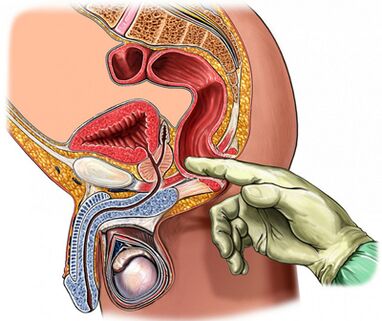
Analysis of 3 glasses of urine and prostate secret
The gold standard in the diagnosis of chronic prostatitis is:
- The first collection of urine.
- The second part of the urine.
- Get the secret of the gland with massage.
- Collection of third urine parts.
Next, microscopic inspection and bacterial material are performed.
With prostate inflammation:
- Microbial number (CFU) exceeds 103/ml (104/ml for staphylococci epidermis), but one cannot ignore the number of small microbes, amounting to tens and hundreds.
- The presence of 10-15 leukocytes in the field of view, identified by microscopy, is a commonly accepted criterion for the presence of inflammation.
The prostate secretion and the 3rd part of the urine are subject to microscopic and bacterial examination:
- In chronic bacterial prostatitis, there is an increase in the number of leukocytes in the secretion of glands and the third post urine, and bacteria (especially intestinal groups) are released.
- With non -bacterial prostatitis, there is an increase in the number of leukocytes in gland secretion, but microflora is not detected.
- At CPP, there is also an increase in the number of leukocytes and microflora.
Normal prostate secretion:
- Less than 10 leukocytes per field of view.
- There is a large number of lecithin cereals.
- No microflora.
In chronic prostatitis, the following are found in prostate secretion:
- The number of leukocytes is large - over 10-15 in the field of view.
- The number of lecithin cereals is reduced.
- PH secretion turns to the alkali side.
- The contents of the acid phosphatase are reduced.
- Lysozyme activity increased.
Obtaining negative results of prostate secretion does not prove the absence of inflammation.
Prostate secretional test value permanent.Usually, during crystallization, a characteristic pattern in the form of fern leaves is formed.In the event of a violation of the aggregation properties of the prostatic secretion, such a pattern is not formed, which occurs when the androgenic hormone background changes.
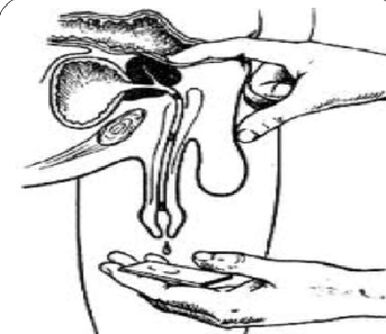
An ultrasound study
If suspected of prostate disease, ultrasound examination of the gland itself is used (temporary ultrasound), the kidneys and bladder are optimal, which allows you to determine:
- The amount and dimensions of the gland.
- Calculi presence.
- Dimensions of seed bubble.
- The state of the bladder wall.
- The amount of urine.
- The structure of the clothing.
- Another type of pathology.
Other methods of prostate research
- Urodynamic conditions (urine flow rate studies) are simple and only determined using studies such as uroflowetry.With the help of this study, it is possible to detect timely signs of infrarvi obstruction and to conduct dynamic observations.
- Biopsy is carried out if suspected abscess, benign hyperplasia and prostate cancer.
- To explain the cause of the development of infr themvezytic obstruction, radiological and endoscopic examinations are performed.
- With a long inflammatory process, it is recommended to perform urethrocystoscopy.
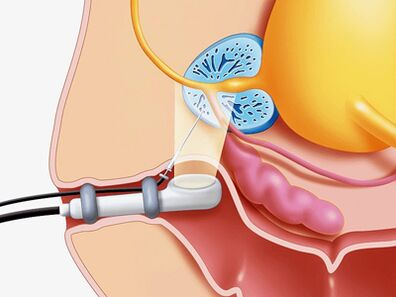
Differential diagnosis
Chronic prostatitis should be distinguished from vesiculoprostatasasis, vegetative prosthetic, congestive prostatitis, pelvic floor myalgia, neuropsychiatric disorders, pseudodyssynergia, sympathetic dystrophy reflexes, dysfunction, bladder hypertrophy, uretral, uretral tuberculosis, prostate cancer and urinary cancer,Urolithiasis, chronic epipidymitis, inguinal hernia.
Treatment of chronic prostatitis
Chronic prostatitis treatment should begin with changes in the lifestyle and diet of the patient.
When treating the disease, medicines that affect the different parts of the pathogenesis are used simultaneously.
The main instructions of therapy:
- Removal of microorganisms caused.
- Anti-inflammatory therapy.
- Normalization of blood circulation in the prostate and pelvic organs.
- Normalization of adequate prostatic drainage.
- Normalization of hormone profile.
- Prevention of organ sclerosis.
For the treatment of chronic prostatitis, the following group of drugs is used:
- Antibacterial.
- Anticholinergic.
- Vasodilators.
- Alpha1- Adrenergic blockers.
- 5 Inhibitors Reduktase Alpha.
- Sitokin Inhibitors.
- Nonsteroid anti-inflammatory drugs.
- Angioprotectors.
- Immunomodulators.
- Drugs that affect the metabolism of the veins.
Antibiotics in the treatment of chronic prostatitis of bacteria
Antibacterial therapy should be carried out taking into account the sensitivity of microorganisms identified to antibiotics.If pathogens are not identified, empirical antimicrobial treatment is used.
The preferred drug is fluoroquinolones from the 2nd -4th generation.They quickly penetrate the gland tissue with conventional application methods, and are active against a large group of gram-negative microorganisms, as well as ureaplasma and chlamydia.If antimicrobial treatment fails, the following should be considered:
- Multiresistance of Microflora,
- short (less than 4 weeks) of treatment course,
- the choice of antibiotics and the wrong dose,
- changes in the type of pathogen,
- The presence of bacteria remaining in the prostate tract, covered with extracellular membranes.
The duration of treatment must be at least 4 weeks with subsequent bacterial control.If the bacteria remain in the 3rd part of the urine and the prostate secretion of more than 103CFU/ml Antibacterial Therapy Therapy Course is prescribed for 2 to 4 weeks.
Cytokine inhibitors in the treatment of chronic prostatitis
Cytokines are glycoproteins secreted by immune cells and others during the state of inflammation and immune response.They participate in the development of the chronic inflammation process.
Nonsteroid anti-inflammatory drugs
Nonsteroid anti-inflammatory drugs have anti-inflammatory effects and reduce pain and fever.Widely used in the treatment of chronic prostatitis in the form of tablets and suppositories.The most effective administration path is rectum.
Immunotherapy
In the treatment of chronic bacterial prostatitis, in addition to antibiotics and anti-inflammatory drugs, immunomodulator agents are used.The most effective is the administrative rectal path.Immunomodulators are widely used, enhancing functional fagocyte activity, which contributes to more effective pathogenic elimination.
Alpha blockers in the treatment of chronic prostatitis
It has been established that the alpha-1 adrenergic barrier normalizes the tone of the smooth muscles of the prostatic urethra, seminal vesicles and prostate capsules, which make the drugs in this group very effective in treating the disease.Alpha-1 adrenergic blockers are used in patients with severe urinary tract disorders in the absence of active inflammation.
For CPP, the treatment period is between 1 and 6 months.
5A-Reductase inhibitor in the treatment of prostatitis and CPP
It has been established that under the influence of 5A-Reductase enzymes, testosterone is converted to prostate form 5A-Dihydrotestosterone, activity in the prostate cells more than 5 times higher than the testosterone activity itself, which in the elderly leads to enlargement of epithelial and stromal organs.
When taking 5A-Reductase inhibitors, stromal tissue atrophy was observed for 3 months, gland tissue atrophy for 6 months, the secretory function was prevented, the severity of the pain and the amount of the gland was reduced, the tension and swelling of the organ was reduced.
The role of anti-Sclerotic drugs in the treatment of chronic prostatitis
With long -term inflammation in the prostate gland, fibrosis develops, indicated by disorders in micro and urodynamic circulation.To prevent the process of fibrosis, anti-coClerotic drugs are used.
Other drugs used in the treatment of chronic prostatitis
Together with the drugs described above, the following are used to treat the disease:
- Antihistamines.
- Vasodilators and angioprotectors.
- Immunosuppressants.
- Drugs that affect the metabolism of the veins and citric acid trisodium.
Herbal products
Effective in the treatment of prostatitis is the use of drugs in the form of suppositories containing biological active peptide complexes separated from the cow's prostate gland.
Under the influence of the drug occurs:
- Stimulation of metabolic processes in gland tissue.
- Increase micro -circulation.
- Reduces swelling, leukocyte infiltration, secretion and pain.
- Prevention of thrombus formation in prostate venules.
- Increased epithelial activity of the Acini Secretary.
- Improve sexual function (increase libido, restore erection function and normalize spermatogenesis).
The prostate gland's finger massage
Some researchers think that for chronic prostatitis, finger massage should be used, taking into account known contraindications.
Physiotherapy
The effectiveness of physiotherapy procedures in the treatment of prostatitis has not been proven today, the mechanism of action has not been established scientifically, and bad reactions have not been studied.
Prevention of chronic prostatitis
When it starts to prevent the development of chronic prostatitis, you should know:
- The risk of developing the disease increases with age.
- Representatives of Negroids are more prone to the disease.
- The family's tendency to the disease cannot be excluded.
People who are exposed to the development of chronic prostatitis should be more aware of their health.
Tips for preventing the disease:
- Take enough fluid.Regular urine helps remove microflora from the urethra.
- Prevents diarrhea and constipation.
- Hold on to a balanced diet.Avoid eating foods rich in carbohydrates and saturated fats, leading to weight gain.
- You should limit the use of ingredients that stimulate the urethra as much as possible: hot and spicy foods, smoke foods, sauces and seasonings, coffee and alcohol.
- Quit smoking.Nicotine has a negative effect on the vascular wall condition.
- Don't be too cold.
- Do not endure your bladder.
- Leading an active lifestyle and playing sports.Exercises to strengthen the pelvic muscles, which eliminate stagnation of venous blood, which in turn, maintain normal prostate function.
- Have a normal sex life.Avoid prolonged abstinence.The glands must be cleaned from timely secretion.
- Stay committed to monogamous relationships.Non -sensible sex increases the likelihood of developing sexually transmitted diseases.
- If you have complaints from genitourinary organs, contact the urologist immediately.
































